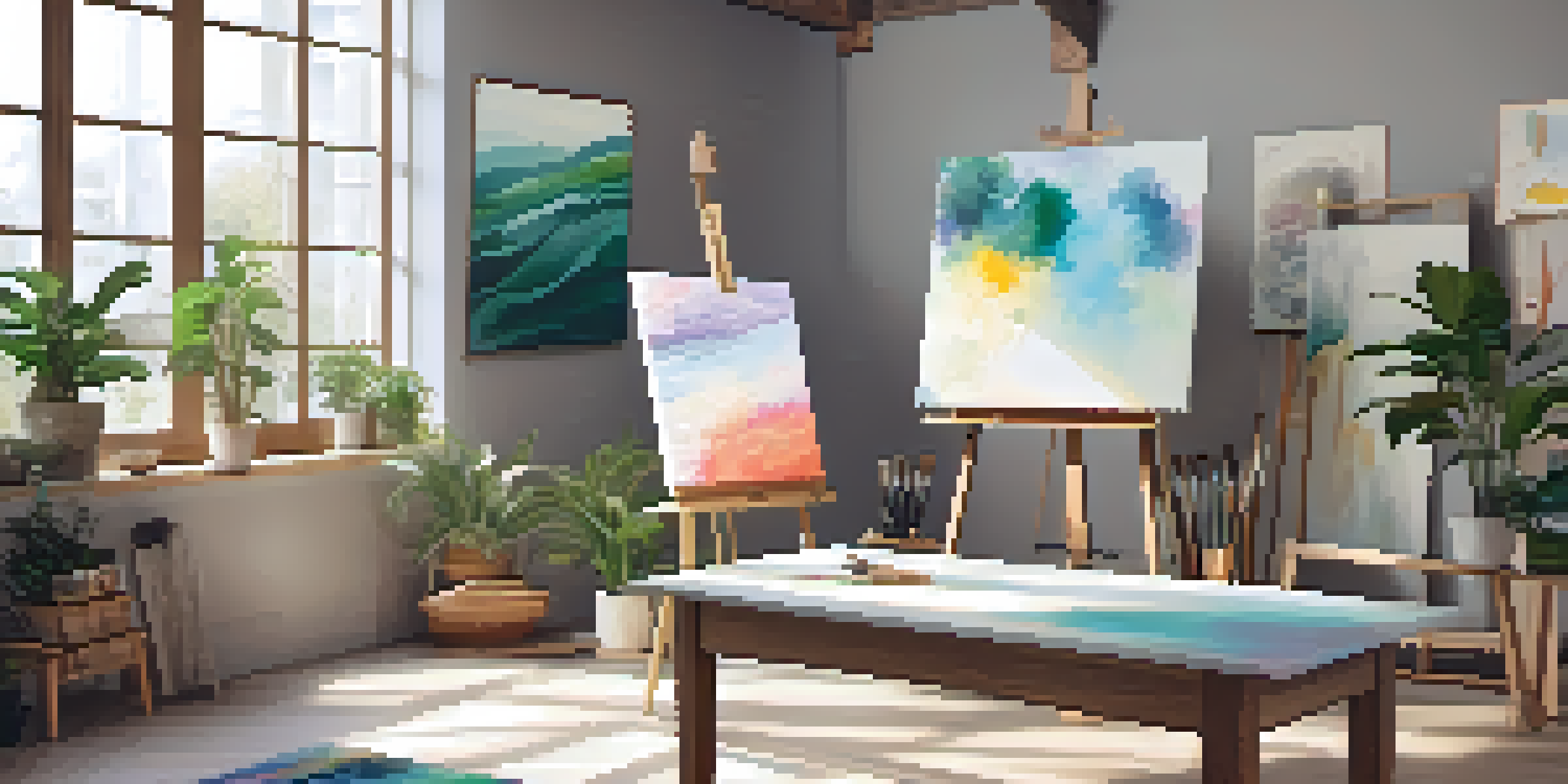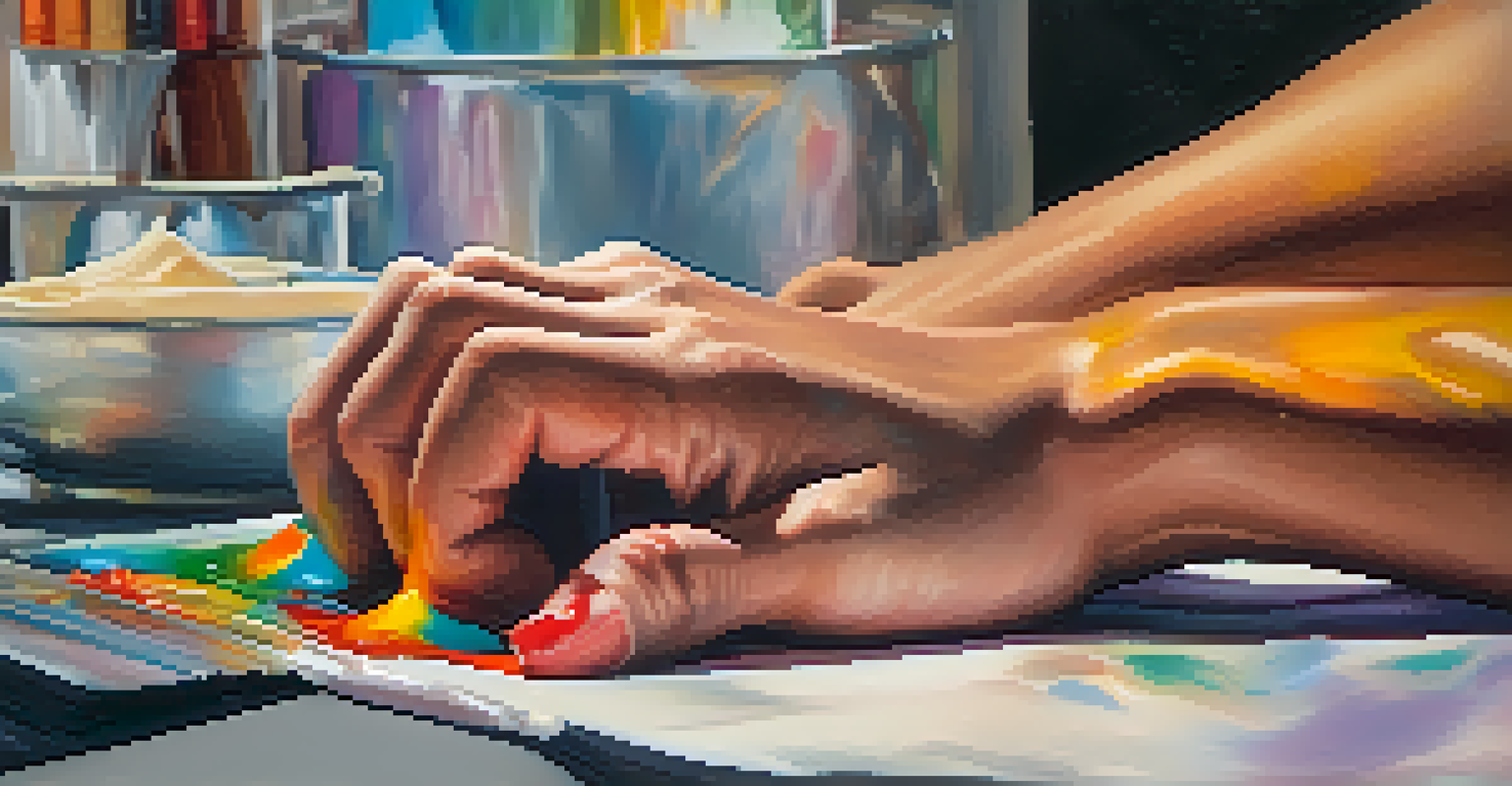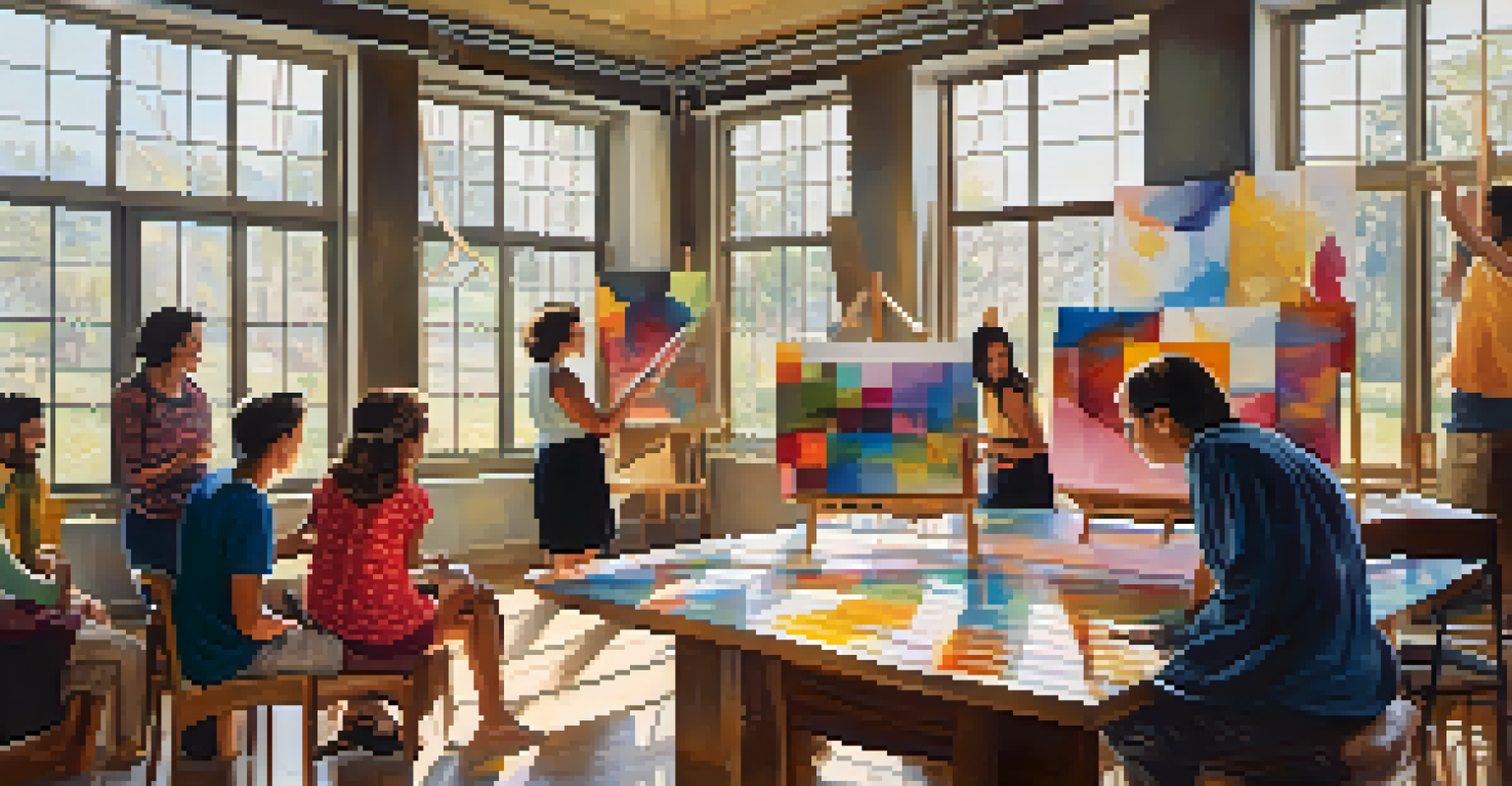Art Therapy Techniques: Painting as a Trauma Healing Method

Understanding Art Therapy and Its Benefits
Art therapy is a therapeutic practice that uses creative expression to promote mental health and emotional healing. By engaging in various art forms, individuals can explore their feelings and experiences in a safe environment. This method can be particularly beneficial for those who have experienced trauma, offering a non-verbal outlet for emotions that might be difficult to articulate.
Art enables us to find ourselves and lose ourselves at the same time.
The process of creating art can stimulate brain activity, reducing anxiety and stress while fostering relaxation. Participants often find that painting helps them process complex emotions and gain insight into their experiences. This unique form of therapy not only aids in emotional healing but also builds self-esteem and confidence.
In essence, art therapy serves as a bridge between the conscious and unconscious mind, allowing individuals to express their inner world. The act of creating can be both cathartic and liberating, making it a powerful tool for trauma recovery. Through art, individuals can reclaim their narrative and begin to heal.
Why Painting is a Powerful Healing Tool
Painting allows for personal expression in a way that words sometimes cannot achieve. For many, the canvas becomes a safe space where they can pour out their feelings without fear of judgment. Colors, shapes, and forms can convey emotions that are often buried deep within, making painting a unique avenue for communication.

Additionally, the tactile experience of paint and brushes can have soothing effects on the mind and body. Engaging in this hands-on activity can ground individuals, bringing them into the present moment, which is especially helpful for those grappling with anxiety or post-traumatic stress. This sensory connection can facilitate mindfulness, promoting a sense of calm.
Art Therapy Promotes Healing
Art therapy utilizes creative expression to facilitate mental health and emotional recovery, providing a safe space for individuals to explore their feelings.
Moreover, painting encourages exploration and experimentation. There are no right or wrong techniques, which empowers individuals to express themselves freely. This sense of freedom can lead to significant breakthroughs in understanding and processing traumatic experiences.
Key Painting Techniques in Art Therapy
Several painting techniques are commonly used in art therapy, each offering unique benefits. One popular method is abstract painting, which encourages individuals to express emotions through colors and forms rather than recognizable images. This approach can help participants explore feelings that are difficult to articulate verbally.
Creativity takes courage.
Another technique is guided imagery painting, where therapists lead individuals in visualizing a scene or experience before translating it onto canvas. This method can help individuals tap into their subconscious and address unresolved trauma in a supportive environment. It often leads to profound insights and emotional release.
Finally, collaborative painting can foster connection and support among participants. Working together on a shared canvas can build trust and camaraderie, making it easier for individuals to open up about their experiences. This collective effort embodies healing through community, reinforcing the idea that no one is alone in their journey.
Creating a Safe Space for Expression
Establishing a safe and supportive environment is crucial in art therapy. This space should be free of judgment, allowing individuals to explore their emotions and creativity without fear. A therapist's role is to create this atmosphere, offering encouragement and guidance throughout the artistic process.
Moreover, it's essential to respect personal boundaries. Participants should feel comfortable sharing as much or as little as they wish about their artwork and experiences. This respect fosters trust and encourages deeper exploration of feelings that may have been suppressed.
Painting as a Unique Expression
Through painting, individuals can communicate complex emotions that words often fail to capture, enabling personal exploration and mindfulness.
In essence, a safe space nurtures vulnerability, which is vital for healing. When individuals feel secure, they're more likely to engage with the therapeutic process and confront their trauma through painting.
How to Get Started with Painting Therapy
If you're interested in exploring art therapy through painting, starting is easier than you might think. Begin by gathering basic supplies like paint, brushes, and canvas or paper. The goal isn’t to create a masterpiece but to express yourself freely, so don’t worry about the outcome.
Consider setting aside dedicated time for your painting sessions. Find a quiet space where you can immerse yourself in the process without distractions. Sometimes, playing soft music or using scents like essential oils can enhance your creative experience and help you relax.
Lastly, remember that it’s okay to feel a range of emotions during this process. Painting can stir up feelings, both positive and challenging. Embrace each emotion as part of your healing journey, and don't hesitate to seek support from a professional if needed.
The Role of a Therapist in Painting Therapy
A qualified art therapist plays a pivotal role in guiding individuals through their painting journey. They are trained to understand the psychological aspects of art creation, helping clients navigate their emotions and experiences effectively. Their expertise allows them to tailor sessions to meet individual needs, fostering a deeper connection to the therapeutic process.
Therapists also provide valuable feedback and encouragement, helping participants interpret their artwork and the emotions it evokes. This guidance can lead to greater self-awareness and healing, as individuals uncover layers of meaning in their creations. The therapist's insight is crucial in ensuring that the process remains therapeutic and supportive.
Therapists Guide the Process
Qualified art therapists play a crucial role in helping individuals navigate their emotions during painting sessions, ensuring a supportive therapeutic experience.
Ultimately, the therapist-client relationship is built on trust and respect. This bond enables clients to feel safe enough to explore difficult emotions through painting, making the healing process more profound and impactful.
Real-Life Success Stories in Painting Therapy
Many individuals have experienced transformative healing through painting therapy. For instance, one participant shared how creating abstract art helped her process grief after losing a loved one. By expressing her sorrow through color and form, she found a new way to honor her feelings and begin to heal.
Another success story involves a veteran who struggled with PTSD. Through guided painting sessions, he was able to visualize and confront his traumatic experiences in a safe environment. The act of creating helped him process his emotions, ultimately leading to a significant reduction in his symptoms.

These stories illustrate the power of painting therapy as a healing method. By tapping into creativity, individuals can express their feelings, gain insights, and embark on a journey toward recovery, proving that art truly is a powerful tool for healing trauma.